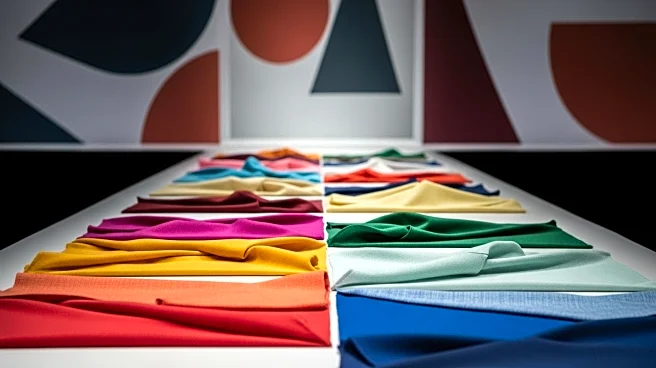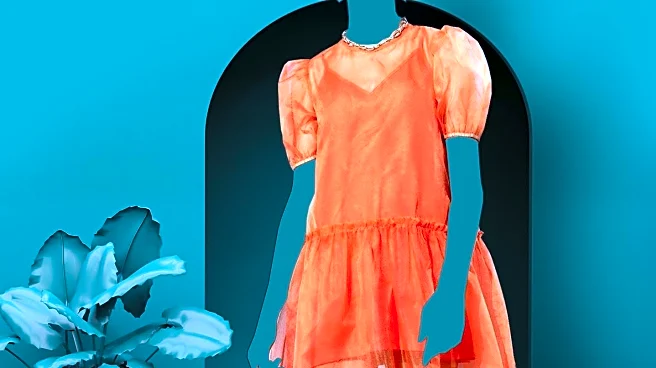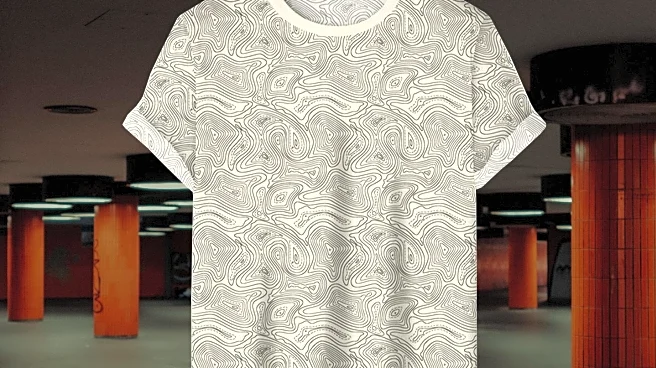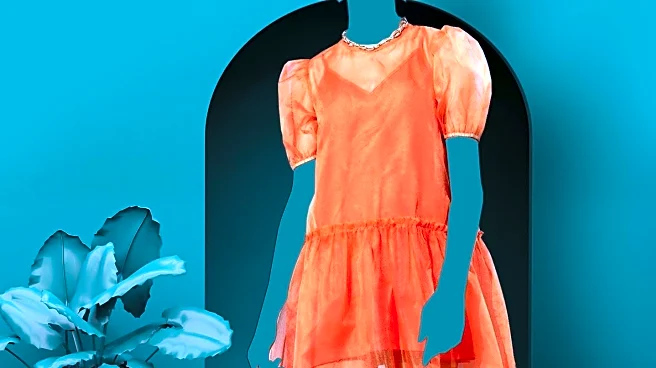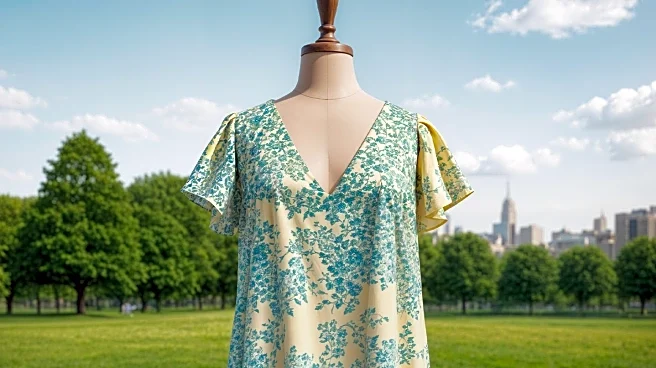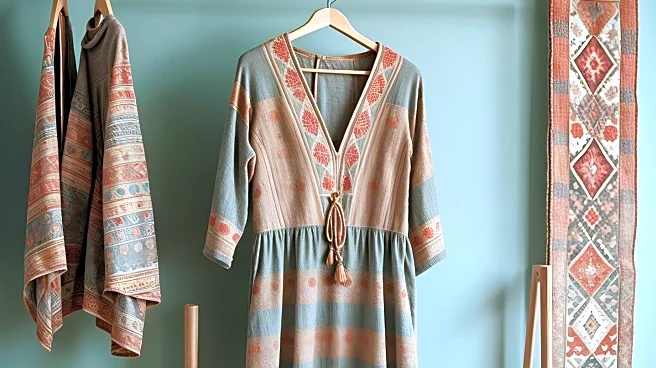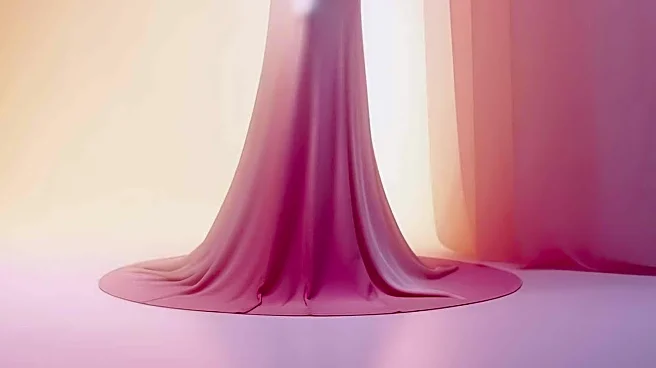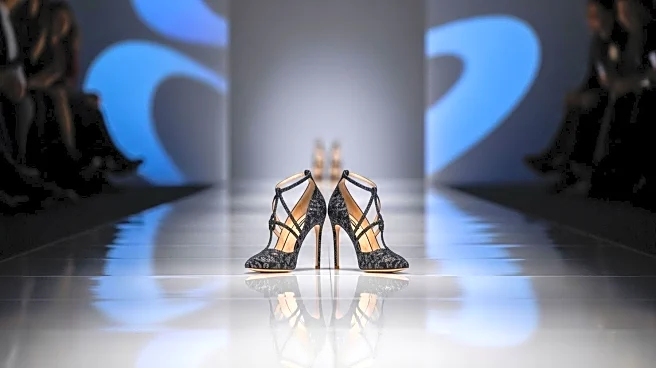What's Happening?
Giovanna Flores has unveiled her Spring 2026 Ready-to-Wear collection, showcasing a unique blend of instinct and chance in her designs. This season, Flores has incorporated vintage shoulder pads from the 1980s into her creations, transforming them into puffy 'going-out' tops and dramatic asymmetric collars on patchworked dresses. Her collection also features pieces constructed from leftover triangle-shaped fabric, resulting in blouses and dresses with subtle volume and romantic shapes. Flores continues to experiment with techniques from previous seasons, such as sheer tops with contrasting colorful strips and dresses made from collaged deadstock quilting bundles.
Why It's Important?
Flores's innovative use of vintage materials and her experimental approach to fashion design highlight a growing trend in the industry towards sustainability and creativity. By repurposing deadstock and vintage items, Flores not only reduces waste but also adds a unique narrative to her pieces, appealing to consumers interested in eco-friendly and story-driven fashion. Her collection reflects a broader movement within the fashion industry to embrace sustainable practices and explore new design possibilities, potentially influencing other designers and brands to adopt similar approaches.
What's Next?
Flores's continued experimentation with materials and techniques suggests that future collections may further explore the boundaries of sustainable fashion. As the industry increasingly prioritizes eco-friendly practices, designers like Flores are likely to play a pivotal role in shaping the future of fashion. Her innovative designs may inspire other designers to incorporate vintage and repurposed materials into their collections, potentially leading to collaborations and new trends in sustainable fashion.
Beyond the Headlines
Flores's work raises important questions about the role of sustainability in fashion and the potential for creative reuse of materials. Her collection challenges traditional notions of fashion design, encouraging both designers and consumers to consider the environmental impact of their choices. This shift towards sustainability may also influence cultural perceptions of fashion, promoting a more conscious and responsible approach to consumption.

